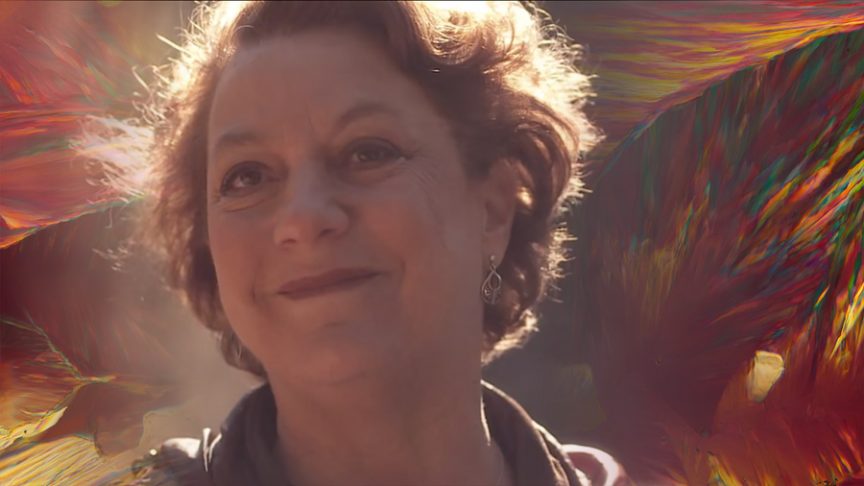Name: Carol Roullard
Which came first in your life, the science or the art?
I think it is best to say they both developed at about the same time. I grew up in a household where both science and art were very important. My parents would take me to both art and science exhibits from an early age. I grew up near San Francisco. We went to the Golden Gate Park’s de Young Museum, Planetarium, and to both the Botanical and Japanese Gardens. We visited Coit Tower and saw the WPA paintings. We went to the Legend of Honor to see Rodin’s The Thinker. I remember visiting the Palace of Fine Arts and then the Exploratorium when it moved in.
I learned about Mendel’s pea experiments in sixth grade and found it amazing. I decided right then to be a geneticist. I also started artistic photography with my Brownie camera around the same time. I would arrange and photograph items from my collection of rocks, shells, and leaves on a table near my bedroom window. I also had a chemistry set that became well used and took a microscope class during summer school.
Even though I changed my plans and went into a career in computer programming, I continued to read about science related stories and visit art galleries. I was able to return to science and art once I retired.

shoreline (hydroquinone-crystals)
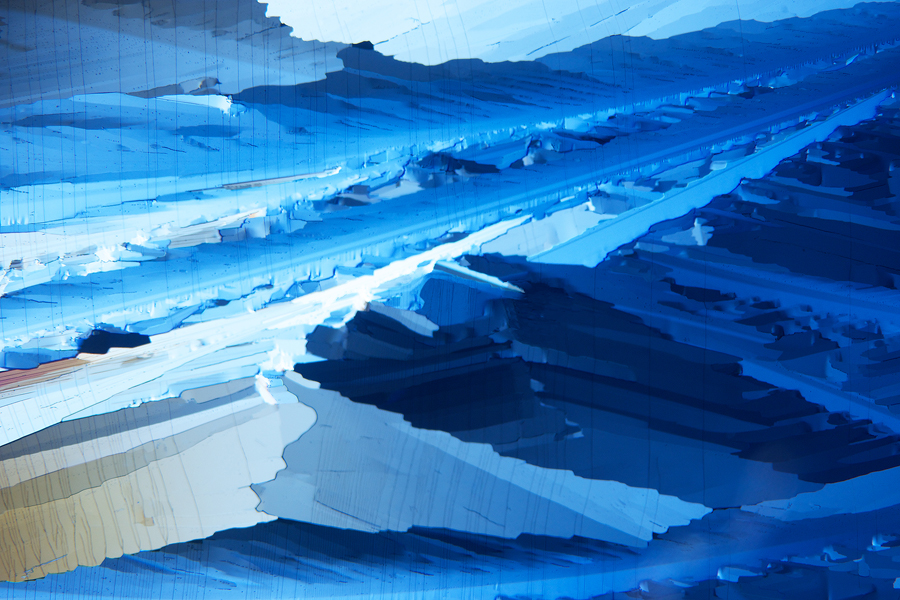
frozen waves (hydroquinone crystals)
Which sciences relate to your art practice?
Chemistry and microscopy. I use chemistry to crystallize chemicals and microscopy to view them.
What materials do you use to create your artworks?
I use chemicals, a research grade microscope, and a high-resolution camera to create my art, plus a lot of small tools to make the crystals. I follow three major steps to creating my art. First, I select a set of birefringent chemicals and crystallize them. Birefringent chemical crystals display colour when polarized light is applied. I started with just four chemicals at the beginning and now use more than 40. Usually, I make about a dozen slides with each session, so I go through a lot of microscope slides and cover slips.
Second, I photograph the crystals. Once I have created a slide, I use my microscope with the camera attached to view the results. I start with the lowest objective power (usually 2x) just to see what I’ve got. If there are crystals, I increase the power and search for something of interest. I set the camera’s white balance at the start, adjust the microscope’s settings and focus carefully. I always take lots of photographs.
Third, I download the photographs to my computer to see what I really have. What might have looked great through the microscope does not always translate to a winning photograph. Even if I love the colours and composition, the image might not captivate me enough to consider it for print. I post a lot of my photographs to social media, but I print only a few. Some of my images are only printed on aluminium. Others work well on paper or garments. Either way, if I get a “keeper” by the end of the day I’m very happy.
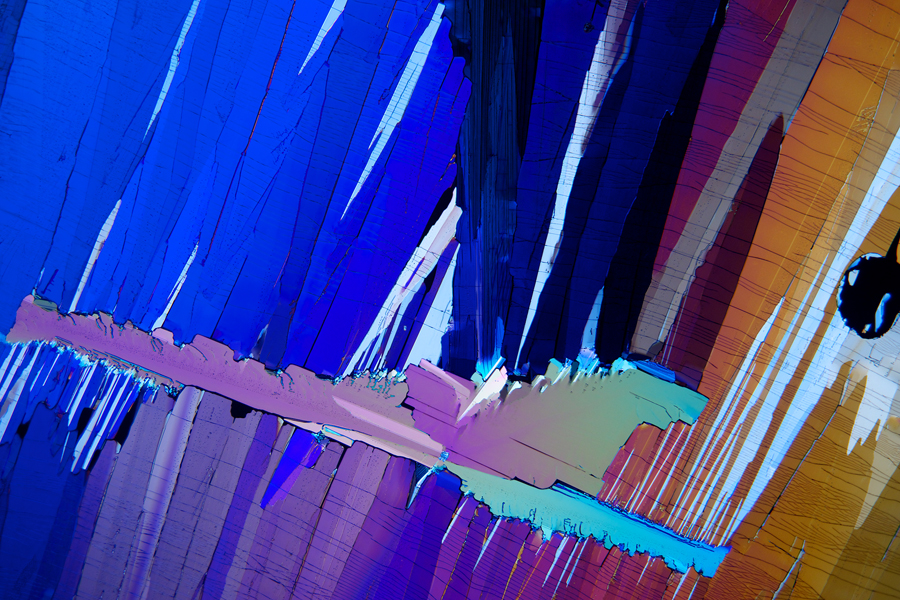
montage (hydroquinone crystals)
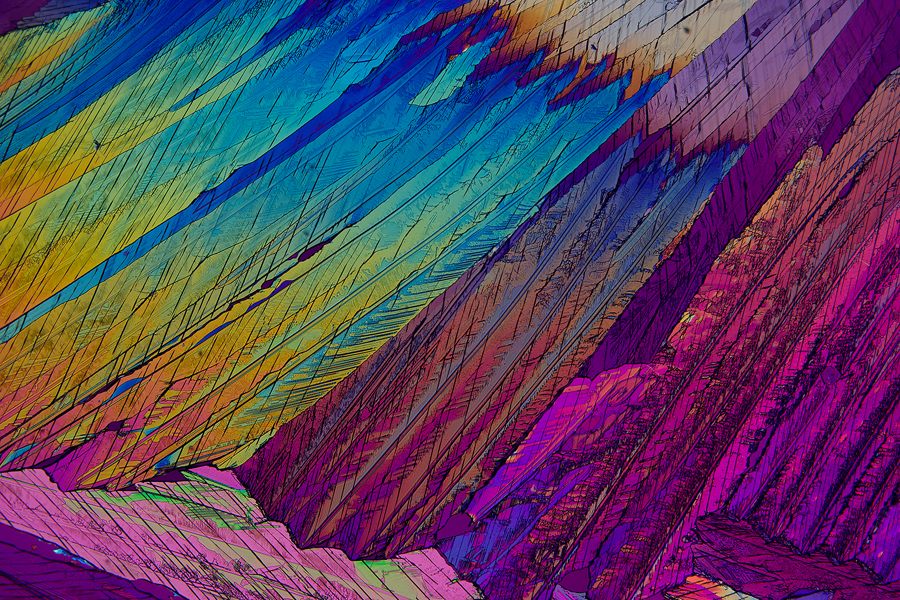
parrot feathers (adipic acid)
Artwork/Exhibition you are most proud of:
I don’t have one exhibition or one piece that I feel I am most proud of. I have my favourites of course that I keep going back to and fall in love with again and again. I think what I’m most proud of is the fact that I took the chance to follow my dream to create art using my love for science. I don’t have years of experience in the sciences, but that doesn’t exclude me from taking new risks. I wouldn’t know if I could accomplish something unless I tried, so I did. It’s been an incredible ride from the start. I look forward to every bend and turn on my journey.
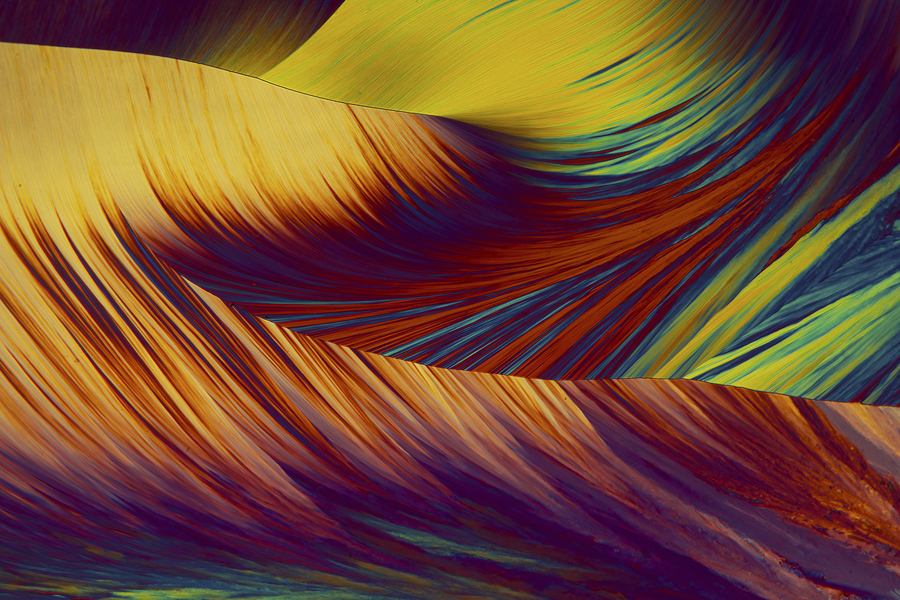
undulating swirls (hydroquinone crystals)

rose mountains at sunset (vanilla crystals)
Which scientists and/or artists inspire and/or have influenced you?
So many scientists and artists have inspired and influenced me to improve my focus on art. I thrive on success stories of just about any kind. Lose 100 pounds and I am incredibly impressed. Master a sport and I’m right there feeling joy for the athlete. So, scientists who better the world by discovering a new concept, unravelling a problem, and/or designing a viable solution is something that always inspires me. Equally, an artist who creates beautiful, meaningful art or captures an emotion that needs to be felt, inspires me to uncover and promote these concepts in my own art.

crystal rock garden (adipic acid crystals)
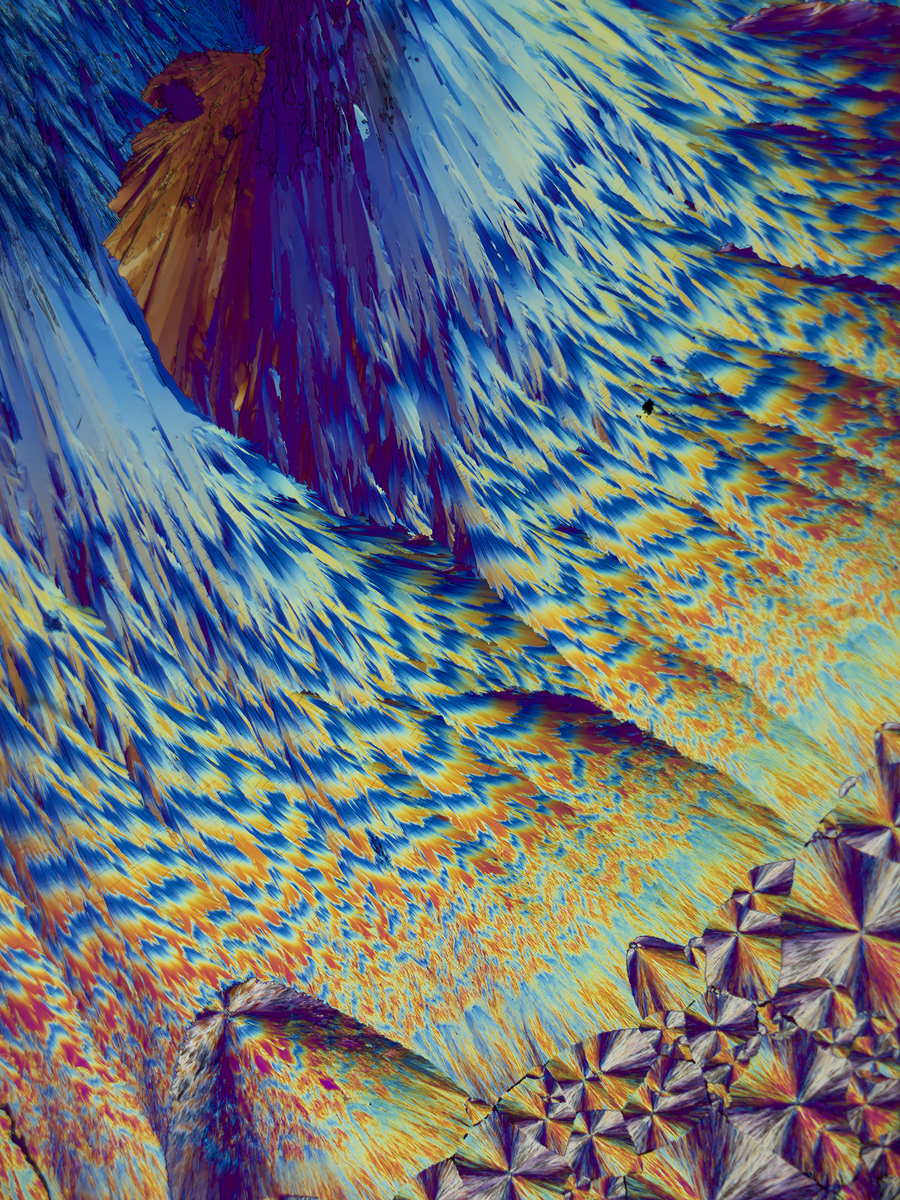
falling sideways (cholesterol crystals)
Is there anything else you want to tell us?
There are so many things I want to experience with my art. If I’m happy with the results, then great. If not, then at least I tried, and likely learned something in the process. The next adventure will have new twists and turns but will hopefully be more successful since I can pull from my foundation of experience and valuable knowledge.
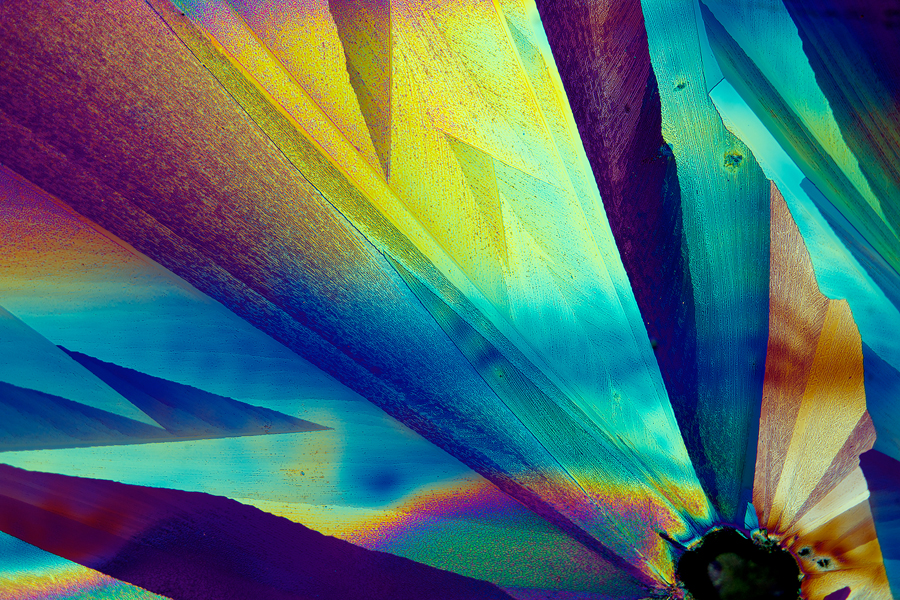
ray of hope (vanilla and anesthetic crystals)

ice phoenix (urea crystals)
Artist Links: Facebook, Twitter, Crystal Art Outfitters
Share this Post

